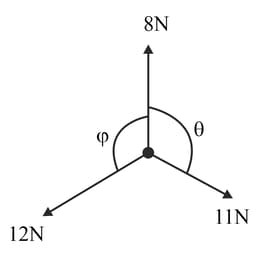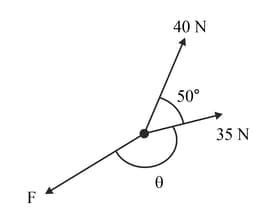A heavy box of mass is on a slope at angle to the horizontal. There is no friction to prevent it from sliding down the slope, but there are three rods attached, at and above the slope, for people to drag it. A man and two boys hold the rods to keep the box in equilibrium.
Show that, if the man pulls with a force of and each boy can pull with a force of up to they can hold the box in equilibrium. (Take )

Important Questions on Forces in Two Dimensions
A heavy box of mass is on a slope at angle to the horizontal. There is no friction to prevent it sliding down the slope, but there are three rods attached, at and above the slope, for people to drag it. A man and two boys hold the rods to keep the box in equilibrium.
If the man pulls with force and each boy can pull with a force up to determine whether or not they can hold the box in equilibrium and state which rod each should hold. (Take )
A box of mass is on a horizontal surface. There are three rods attached on one side, at and above the horizontal, for people to drag it. Three people are available to pull on these rods and they are capable of providing forces of and
The box is being pulled in the opposite direction by a horizontal force of Show that only two of the people are required to keep the box in equilibrium. State which of the rods each person holds.
A box of mass is on a horizontal surface. There are three rods attached on one side, at and above the horizontal, for people to drag it. Three people are available to pull on these rods and they are capable of providing forces of and
The horizontal force is increased to . Show that if the box is to be prevented from moving horizontally, it cannot remain on the ground.
A particle is held in place by forces of and as shown in the diagram. Find the values of and

A mass of is held in equilibrium by two ropes with tensions of and Find the angles that the ropes make with the vertical.
A ship is held in place by two ropes with forces and as shown in the diagram, which prevent the wind blowing it away. The wind has force and acts at an angle to the force, as shown. Find the sizes of and

